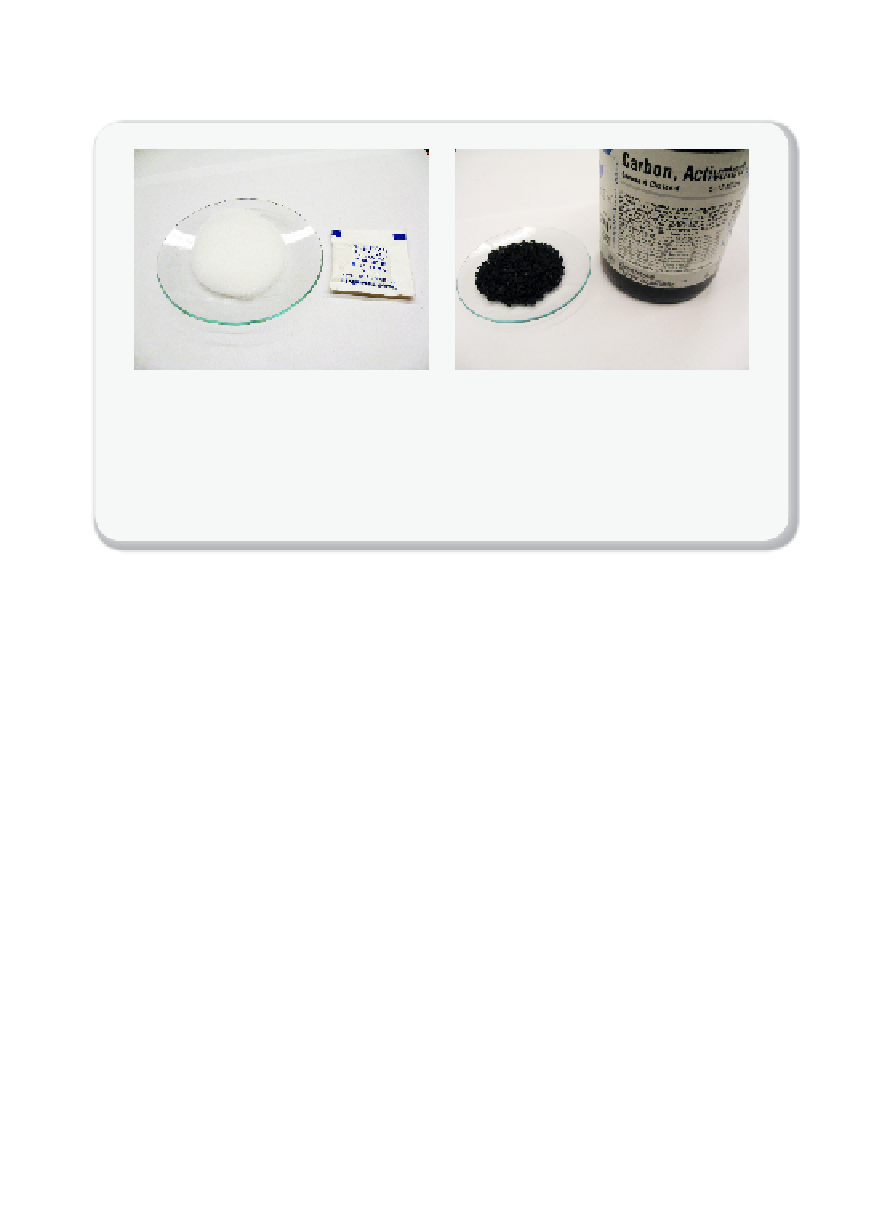Environmental Engineering Reference
In-Depth Information
(a)
(b)
Figure 6.1.1
Adsorption materials
Examples of adsorption materials are: (a) silica (you have probably bought items with
silica bags to adsorb water), and (b) activated carbon (perhaps used in your organic
chemistry lab).
Photos courtesy of Joseph Chen.
Zeolites
are nanoporous materials that are used in many different
applications. The basic building blocks of zeolites are corner-sharing
TO
4
groups, where the T atom is usually Si, Al, or in some cases P.
These tetrahedra can form different types of units, such as 6-rings,
8-rings, or 12-rings. These rings are the so-called secondary building
units for different types of cylinders or cages. These cylinders or cages
form a network of pores in the zeolite crystal. At present over 200 differ-
ent zeolite structures are known, each of which has a similar chemical
composition, but a very different pore topology (see
Figure 6.1.2
). Each
zeolite structure or topology has been given a unique three letter name
by the Structure Commission of the International Zeolite Association
(IZA-SC)
.
Since the recent discovery of a new class of nanoporous materials
called
Metal Organic Frameworks (MOFs),
the list of novel porous
materials has grown by an order of magnitude. MOFs are metal/organic
hybrid solids built from organic linkers and nodes made out of inorganic
metals (or metal-containing clusters). One sample structure, MOF-5, is
shown in
Figure 6.1.3
. By changing the metal and/or the linker, one can








Search WWH ::

Custom Search